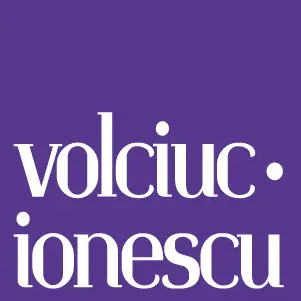The Investment Plan for Europe (the "Investment Plan") which has become operational recently, focuses on generating investments and removing obstacles to investments in the European Union, through:
- the European Fund for Strategic Investments ("EFSI") aimed at mobilising at least EUR 315bn in additional investment;
- supporting the investment environment in Europe through the European Investment Advisory Hub and the European Investment Project Portal; and
- the improvement of the European regulatory environment.
1. European Fund for Strategic Investments (EFSI)
EFSI is an EU initiative comprised of a EUR 16bn guarantee from the EU budget, and an allocation of EUR 5bn from the European Investment Bank (EIB) budget. EFSI will be managed by and within existing EIB Group (European Investment Bank and European Investment Fund), distinguishing itself by the fact that it will focus on supporting higher risk projects. EFSI objective is to mobilise additional investments of at least EUR 315bn from private and public sector.
Sectors of key importance for EFSI support include the following:
- strategic infrastructure (digital, transport and energy);
- education, research, development and innovation;
- expansion of renewable energy and resources efficiency;
- support for smaller business and midcap companies.
The following entities can apply for EFSI based financing:
- entities of all sizes, including utilities, special purpose vehicles or project companies, small and medium-sized enterprises (with up to 250 employees) and midcaps (with up to 3,000 employees);
- public sector entities;
- national promotional banks or other banks to deliver intermediated lending;
- funds and any other form of collective investment vehicles;
- bespoke investment platforms.
To benefit from EFSI support, projects are subjected to the standard EIB due diligence as well as an assessment by the EFSI Investment Committee. In particular, projects need to be:
- economically and technically sound;
- match the eligible sectors;
- contribute to EU objectives and to sustainable growth and employment;
- mature enough to be bankable;
- priced in a manner commensurate with the risk taken.
In order to benefit from EFSI support, projects are financed and presented in two ways, depending on the cost of the project:
- For projects with a cost of at least EUR 25m, EIB provides project loans. Project promoters should follow the usual EIB loan application procedures (i.e. providing the EIB’s operations Directorate with a detailed description of their capital investment together with the prospective financing arrangements).
Further information on the application procedure and documents can be found at:
http://www.eib.org/infocentre/publications/all/application-document-for-an-eib-loan.htm
Information on project loans can be found at: http://www.eib.org/products/lending/loans/index.htm - (ii) For projects with a cost under EUR 25m, EIB provides intermediated loans (credit lines) – EIB finance the local, regional and national banks (promotional banks), which in their turn finance the project. Project promoters should contact the promotional banks and other intermediaries involved directly, providing a detailed description of their capital investment together with the prospective financing arrangements.
Information on intermediated loans can be found at:
http://www.eib.org/products/lending/intermediated/index.htm
2. Typical projects which could benefit from EFSI support
As provided by Factsheet 3 – Where will the money go? found on the EIB website, the following examples of projects could potentially benefit from EFSI support, depending on the project features in each individual case:
- a programme for the construction and rehabilitation of public buildings aimed at improving their energy efficiency, currently held up by lack of funding;
- transport links between EU countries facing delays due to high upfront project costs;
- open-access, laser-based research infrastructure in countries currently in need of financing to avoid delays in implementation;
- a programme to upgrade school facilities in countries facing implementation challenges and lack of funding;
- investment in water infrastructure, including wastewater treatment plants and water supply facilities, hampered by a lack of financing;
- other projects supporting, for example, the expansion and upgrading of freight and passenger capacities in ports and airports; dedicated rail-connections between important airports and urban centres; greening projects in the area of maritime transport; alternative fuel-infrastructure along major roads; 3rd generation bio refineries; etc.
3. Supporting the investment environment in Europe
3.1. European Investment Advisory Hub (EIAH)
The EIAH is a joint initiative of the Commission and EIB and is considered Europe’s gateway to investment support. It shares good practices, lessons learnt and real-life case studies on project finance and project management. EIAH centralises expertise from the Commission, the EIB, National Promotional Banks and the managing authorities of the European Structural and Investment Funds.
Project promoters, public authorities and private companies can receive technical support to help get their projects off the ground, make them investment-ready, gain advice on suitable funding sources, and access a range of technical and financial expertise.
Information can be found at:
http://www.eib.org/eiah/index.htm
http://www.eib.org/infocentre/videotheque/introducing-the-european-investment-advisory-hub.htm
3.2. European Investment Project Portal (EIPP)
EIPP is a web portal listing potential investment opportunities in the EU, providing potential investors with clear and transparent information in a standardised format. The portal is envisaged to include viable projects to ensure that investors have reliable information to make their decisions.
Private/public companies, public authorities (central/regional/local authorities) will be allowed to submit project applications.
Projects listed on EIPP do not necessarily receive EFSI funding. They could be financed by the EFSI if justified, and/or by any other means.
EIPP is expected to be operational in early 2016.
Information on EIPP can be found at:
http://ec.europa.eu/priorities/jobs-growth-investment/plan/eipp/index_en.htm
4. Improvement of EU regulatory environment
According to Factsheet 4 – Improving the investment environment found on EIB website, in order to trigger investment, the regulatory framework at the European as well as national level needs to be clear, predictable and stable. In order to remove the obstacles generated by the regulatory framework, examples of actions envisaged to be taken are:
- in the energy sector – full implementation of the Third Energy Package;
- in the transport sector – full implementation of the Fourth Railway Package, Blue Belt Package on maritime transport and European Single Sky.
This article was also published on Lexology. For more details, click here.




